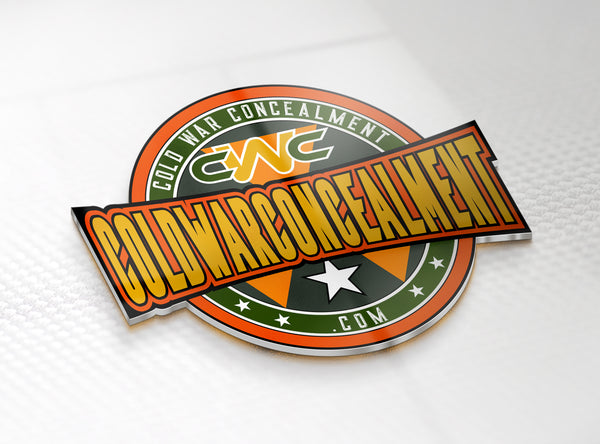Proper gun cleaning is an essential aspect of responsible gun ownership. Regular maintenance and cleaning not only ensure optimal firearm performance but also contribute to safety and longevity. In this article, we will explore the importance of gun cleaning, step-by-step cleaning procedures, and key tips to help you maintain your firearm effectively.
Why Gun Cleaning Matters:
-
Reliable Performance: Regular cleaning removes dirt, debris, and fouling that can accumulate inside the firearm's barrel, action, and other critical components. This build-up can impact reliability, accuracy, and overall performance. Cleaning ensures that your firearm operates smoothly and consistently, reducing the chances of malfunctions or misfires.
-
Safety First: A clean firearm is a safe firearm. Over time, residue, and debris can affect the functionality of important safety mechanisms. By maintaining a clean gun, you reduce the risk of accidental discharges and ensure that safety features, such as the trigger and firing pin, function as intended.
-
Preventing Corrosion: Firearms are susceptible to rust and corrosion, especially if exposed to moisture or humidity. Regular cleaning and proper lubrication create a protective barrier, preventing corrosion and extending the lifespan of your firearm.
-
Longevity and Value: Consistent cleaning and maintenance contribute to the long-term value of your firearm. By keeping your gun in good condition, you preserve its functionality, appearance, and potential resale value.
Step-by-Step Gun Cleaning Procedure:
-
Safety First: Before cleaning, always ensure your firearm is unloaded and pointed in a safe direction. Remove the magazine (if applicable) and check the chamber to verify it is empty.
-
Gather Cleaning Supplies: Prepare your cleaning kit, including a cleaning rod, bore brush, patches, cleaning solvent, lubricant, and a cleaning mat or surface to work on.
-
Disassembly: Follow the manufacturer's instructions to disassemble your firearm, paying attention to the specific steps for your model. Remove the slide, barrel, recoil spring, and other removable components.
-
Bore Cleaning: Attach a bore brush to your cleaning rod, dip it in cleaning solvent, and run it back and forth through the barrel several times. Follow with clean patches until they come out clean, indicating the removal of fouling and residue.
-
Action and Small Parts Cleaning: Use a nylon brush or toothbrush along with a solvent to clean the action, slide, frame, and other small parts. Wipe away excess solvent and debris with clean patches or a cloth.
-
Lubrication: Apply a thin layer of firearm-specific lubricant to key contact points and moving parts, ensuring smooth operation. Be careful not to over-lubricate, as excessive lubrication can attract dirt and debris.
-
Reassembly: Once all components are clean and lubricated, reassemble your firearm following the manufacturer's instructions. Check that all parts are properly aligned and seated.
-
Exterior Cleaning: Wipe down the exterior of the firearm with a clean cloth or silicone cloth to remove fingerprints, oils, and debris. Consider using a protective product designed to prevent rust and corrosion.
-
Storage: Store your clean firearm in a secure and dry location, away from excessive moisture or humidity. Consider using a gun safe or case for additional protection.
Key Tips for Effective Gun Cleaning:
-
Follow Manufacturer Recommendations: Always refer to your firearm's instruction manual for specific cleaning and maintenance guidelines provided by the manufacturer.
-
Use Appropriate Cleaning Products: Choose cleaning solvents, lubricants, and brushes that are specifically formulated for firearms. Avoid using household cleaning products, as they can damage the finish or internal components. We love the kits from Otis Tactical, such as the Otis Tactical Cleaning Kit – Cold War Concealment and the Elite Cleaning Kit by Otis Technology – Cold War Concealment
-
Regular Cleaning Schedule: Establish a regular cleaning routine based on your frequency of use and environmental conditions. High-round-count firearms or those used in adverse conditions may require more frequent cleaning.
-
Inspection: Take the opportunity while cleaning to inspect your firearm for any signs of wear, damage, or potential issues. Address any concerns promptly or consult a qualified gunsmith if needed.
Conclusion: Gun cleaning is an essential responsibility for firearm owners. By regularly maintaining and cleaning your firearm, you ensure reliable performance, enhance safety, prevent corrosion, and preserve its value. Adhering to proper cleaning procedures, using appropriate cleaning products, and following manufacturer guidelines will help you keep your firearm in excellent condition for years to come. Remember, a well-maintained gun is a dependable tool and a testament to responsible gun ownership.

